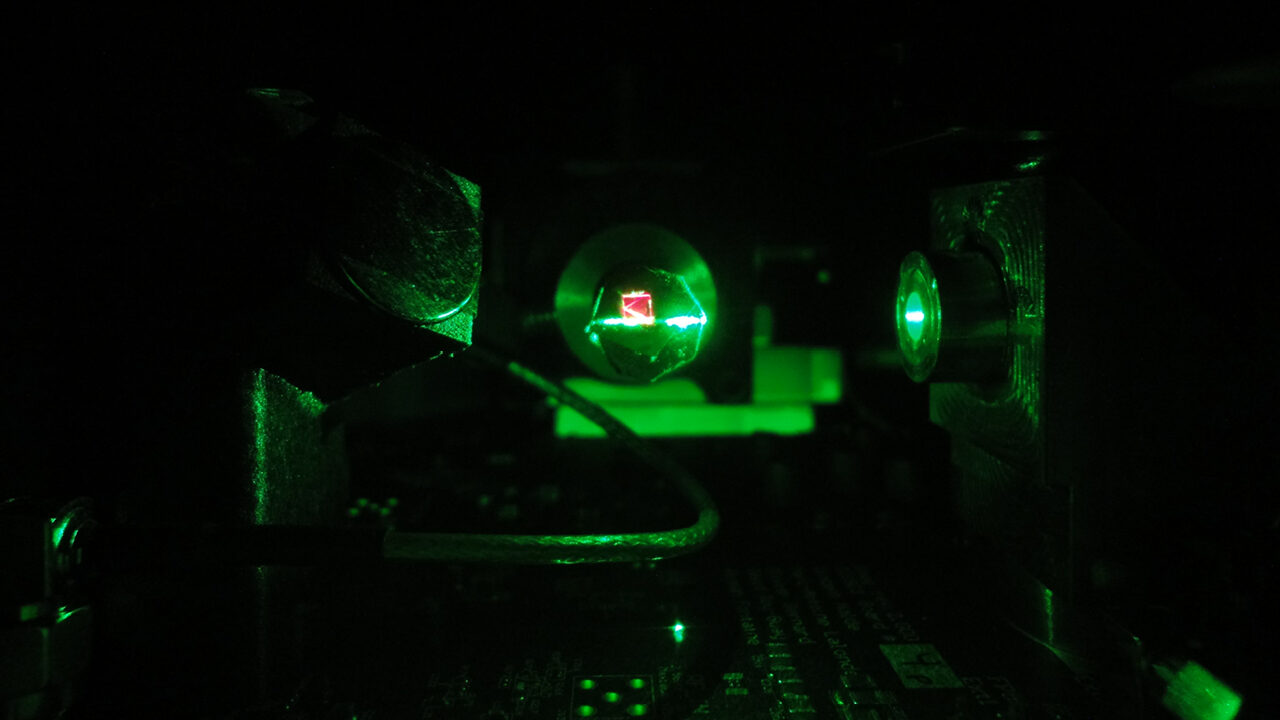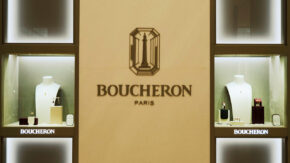Lab tech: Grown stones’ chemical properties are spurring progress in computing, sustainable energy, and other emerging fields.
Synthetic diamonds have been around more than 70 years. Historically, the material’s hardness and durability suited it to industrial applications like drilling and cutting in the automotive and aerospace sectors. However, advances in diamond-growing methods, especially chemical vapor deposition (CVD), now allow scientists to utilize these diamonds for more nuanced purposes, including thermal cooling solutions, limitless batteries, and quantum-grade computers.
Crucially, CVD growing methods give manufacturers nano-scale control of defects in the diamond’s carbon lattice structure. This allows emerging companies to “leverage quantum properties that could unlock a new range of sensors and secure communications,” says Daniel Twitchen, chief technologist at De Beers’ Element Six division, which manufactures synthetic diamonds and super-materials.
Fortunate defects
More than 15 years ago, researchers discovered that certain defects in rare natural diamonds, such as nitrogen-vacancy centers, have desirable quantum properties. Element Six creates lab-grown diamonds with high concentrations of these precise quantum defects for companies that need them, whether for telecommunications, medical diagnostics, or oxidation cells that treat organic waste in water. The company’s latest innovation — DNV-B14 — is a type of diamond that can “be controlled and manipulated at room temperature, enabling some of the strange properties of quantum mechanics to be exploited, such as principles of entanglement and superposition,” says Twitchen.
Synthetics have other useful traits as well. “Diamond’s material properties are extreme,” notes Lewis Fish, head of product at British laser tech specialist Opsydia. “It has a higher thermal conductivity than metals like silver and copper, offers strong radiation resistance, and does not react with most chemicals.”
Opsydia is currently developing precision laser processes that can create diamond-based devices. For example, they can carve three-dimensional arrays of electronic circuits into a diamond’s interior for use in chemical analysis, among other things. “Diamond sensors could withstand harsh chemical environments without negatively impacting measurements,” elaborates Fish.
Of course, relying on rare, valuable and unpredictably sized natural diamonds for this type of experimentation is impractical. Synthetics provide scope for exploration.
A new kind of battery
Lab-grown diamonds are also playing a role in sustainable technologies. One example is San Francisco-based company NDB, which aims to “redefine the nature of the battery,” according to CEO Nima Golsharifi. The company’s name stands for Nano Diamond Battery, and its product “generates electricity similar to a solar cell,” he explains. “But instead of sunlight, it uses the radiation from radioactive decay. Due to this, NDB is not climate-dependent and can provide energy without interruption.”
The process involves trapping remnants of nuclear waste inside tiny synthetic diamonds and using the resulting radiation to power phones and cars. This can all be done safely, according to the company, which expects to have a working prototype this year.
Jewelry science
Although firms like NDB operate in a different sphere than synthetic-diamond jewelers, both types of businesses contribute to the continued development of CVD technology — and as a result, to the stones’ downward price trend.
“In 2018, the cost of manufacturing synthetic diamonds decreased from $2.4 million per kilogram to approximately $40,000 per kilogram,” reports Golsharifi. “With the advancement of technology, we anticipate a price reduction in the near future that will make our technology even more appealing.”
Element Six offers further proof that growing industrial diamonds goes hand-in-hand with making gem-quality stones. De Beers’ Lightbox Jewelry brand, for example, emerged when the company applied Element Six’s patented CVD technology to diamond jewelry. “Controlling and reducing impurities are the basis of excellent quantum properties, but also the basis for high color and clarity [in] gemstones,” says Twitchen. “It’s amazing that the same defects that make diamonds pink in color also have extraordinary quantum properties.”
Harnessing these defects may lead to revolutionary advances in healthcare, security and entertainment, while also refining the process of creating diversely colored, mass-market lab-grown diamond jewels. It’s no wonder, then, that Twitchen calls diamond the “ultimate super-material.”
Image: A nitrogen-vacancy doped lab-grown diamond luminesces red under green laser excitation at Element Six. (Element Six)



